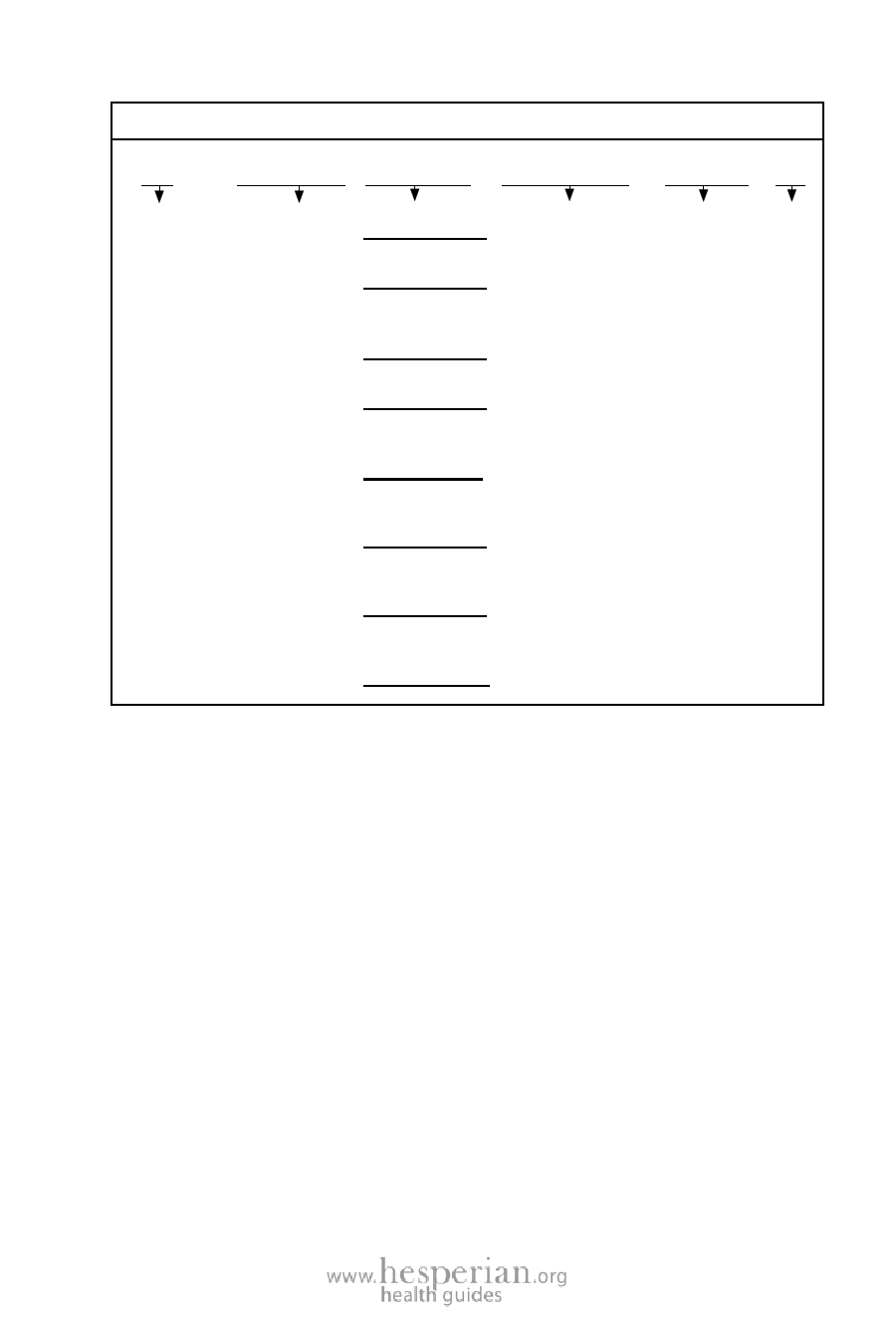
Where There Is No Dentist 2012 211
Use
To make
dressings
To
fill
cavities
To treat
sensitive
teeth
To give
injections
of local
anesthetic
Proper Name
1. clean
cotton gauze
2. clean
cotton rolls
3. oil of
cloves
(eugenol)
4. zinc oxide
powder
5. flouride
toothpaste
6. lidocaine
2% 1.8 ml
cartridge
7. disposable
needles,
27 gauge long
8. lidocaine
topical
anesthetic
SUPPLIES
Local name Amount you need in
(write in here)
3 months
8 packages
of 100
10 packages
of 50
50 ml
500 grams
1 tube
8 boxes of 100
cartridges
8 boxes of
100 needles
5 small
tubes
Amount to
keep in kit
20 pieces
8 rolls
1 small
bottle
1 small
bottle
1 tube
10
cartridges
10
needles
1
tube
See
Page
225
147
146
146
211
(below)
136
136
141
FLUORIDE
You can use a special solution of fluoride (if available) or any fluoride toothpaste,
which is much cheaper and more common (see above, number 5), in 2 ways:
To treat a sensitive tooth: Put cotton rolls between the lip and gum on
each side of the bad tooth. Dry the bad tooth with cotton and look for
the small groove that is causing the pain. Cover the groove with a smear
of fluoride toothpaste and tell the patient not to spit or rinse it out for
several minutes. One week later, give the same treatment again, or have
the patient do it himself.
To help prevent cavities, in children who do not clean their teeth with
fluoride toothpaste, once a week have children bring their toothbrushes or
toothsticks to school. Put some fluoride toothpaste on each child’s brush
or stick and have them brush and coat their teeth, leaving the paste in their
mouths for at least one minute. Then they can spit it out. Do not eat or
drink for 30 minutes.
On page 24, children are shown using a twice‑yearly application of a special
paste, a ‘topical fluoride gel’. This is good, but the weekely treatment with
fluoride paste is even better for the teeth.